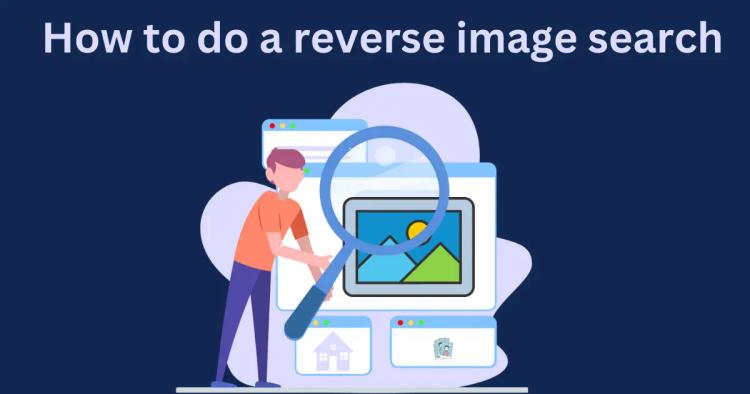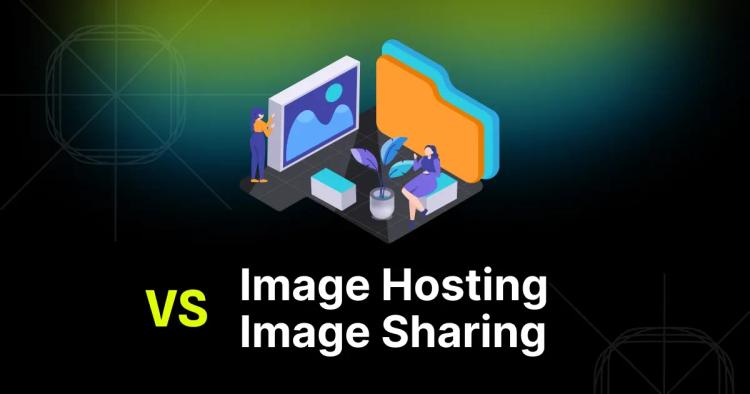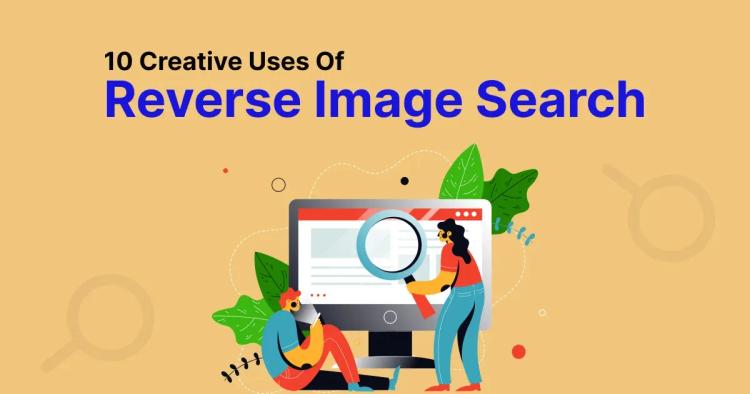Picture this: a user lands on a website, and within milliseconds, their eyes are drawn to a stunning image that encapsulates the essence of what the site has to offer. That initial visual engagement is the spark, the moment where a connection is formed.
It's the reason why social media platforms are flooded with memes, infographics, and captivating images – because in this fast-paced digital era, a picture truly is worth a thousand words. Now, as we delve into the realm of image optimization, we are essentially embarking on a quest to preserve and enhance this visual magic.
It's not just about adding pretty pictures to a website; it's about ensuring these visual elements seamlessly integrate into the user experience. In this post, we'll unravel the intricacies of image optimization, exploring how it can elevate your online presence, captivate your audience, and make your digital space truly unforgettable.
ᴀᴅᴠᴇʀᴛɪsᴇᴍᴇɴᴛWhy Image Optimization Matters
The Impact of Images on Website Performance
In the virtual showground of the internet, where websites compete for attention, loading times are the stage on which success is determined. Imagine waiting impatiently for a webpage to load, only to be greeted by a pixelated image that slowly unveils itself.
Frustration sets in, and that fleeting moment of potential connection begins to wane. This is where the impact of images on website performance becomes apparent. Every image added to a webpage comes with a cost – the cost of loading time.
The larger the image file, the more time it takes to display. In the world of the internet, where users demand instant gratification, a sluggish website can be the kiss of death.
Image optimization steps in as the unsung hero, allowing you to retain the breathtaking visuals while ensuring that your audience doesn't lose interest before the show even begins.
Search Engine Friendliness: The SEO Connection
Search engines are the digital gatekeepers, guiding users to the most relevant and engaging content. They don't just scan text; they devour images, analyzing them to understand the context and relevance of a webpage.
Image optimization is not just a matter of aesthetics; it's a language that search engines understand. When your images are optimized – compressed, resized, and tagged with descriptive alt text – search engines reward your website with higher visibility.
In the ever-expanding digital jungle, where the competition for the top spot is fierce, image optimization is the compass that guides search engines to your digital oasis.
Balancing Quality and Load Time
In the grand tapestry of image optimization, there exists a delicate dance between quality and speed. Users demand sharp, vibrant images that tell compelling stories, but they also demand those images instantaneously.
Striking the right balance is an art, and it requires a deep understanding of compression techniques, resizing strategies, and the nuances of different file formats.
Image optimization isn't about compromising quality for speed or vice versa; it's about finding that sweet spot where visuals shine without making users tap their fingers impatiently.
It's about delivering an experience that seamlessly weaves together the beauty of high-quality images with the swift responsiveness users crave. In essence, it's the harmony of the digital symphony, where every note – or pixel – plays its part in creating a masterpiece.
Image Optimization Techniques
Compression: The Art of Retaining Quality
When we talk about compression, imagine it as fitting a big, fluffy pillow into a small bag without losing its softness. Similarly, image compression is about making your pictures smaller in file size without making them look pixelated or blurry.
This technique is like a magic trick where you keep the quality intact while making your images load faster on websites. Smaller file sizes mean quicker loading times, and that's a win for everyone visiting your site. One way to compress images is by using online tools like TinyPNG or ImageOptim.
These tools take your high-resolution images and compress them without compromising their visual appeal. It's like zipping up a folder to save space on your computer – only in this case, we're making sure your website loads faster for your visitors.
Resizing: Finding the Sweet Spot for Web Display
Resizing images is like finding the perfect outfit – it should fit just right. Imagine trying to wear a shirt that's too big or too small; it just doesn't look good. The same goes for images on your website.
Resizing is about adjusting the dimensions of your pictures to suit the screen they'll be displayed on. A massive image on a small phone screen? Not ideal. Tools like Adobe Photoshop or even online platforms like Canva can help you easily resize images.
It's like having your virtual tailor, make sure your visuals look sharp and stylish on any screen. By finding the sweet spot for web display, you ensure that your images are the perfect fit for your website visitors.
Choosing the Right File Format
Choosing the right file format is a bit like picking the right tool for the job. Different file formats have different strengths and weaknesses, just like a wrench might not be as useful for painting as a brush. For images, common formats include JPEG, PNG, and GIF.
JPEG is like the all-rounder – great for photographs and images with lots of colors. PNG is like a superhero cape for images that need transparency, like logos. GIF is like a lively dancer, perfect for animated images.
Understanding when to use each format ensures your images look their best while keeping your website's performance in top shape.
Image Lazy Loading: A Smart Strategy
Imagine you have a bunch of presents, and you only want to unwrap them when your friends are ready to see what's inside.
Image lazy loading is a bit like that. Instead of loading all your images at once when someone opens your webpage, lazy loading makes the browser load them only when they're about to come into view.
This smart strategy ensures that your website loads quickly, especially on slower connections or devices. It's like serving dessert only when your guests are ready for it, making sure everyone enjoys your website without any unnecessary delays.
ᴀᴅᴠᴇʀᴛɪsᴇᴍᴇɴᴛTools for Effective Image Optimization
Think of optimizing tools as your digital assistants, here to make your life easier. These tools are like having a team of experts ready to fine-tune your images for the best performance. Tools like ImageOptim, Kraken.io, and JPEGoptim are like your digital sidekicks, helping you compress images without breaking a sweat.
For resizing, platforms like Canva and Adobe Photoshop act as your virtual tailors, ensuring your images fit perfectly on any screen. It's like having a magic wand to make your visuals look stunning. Embracing these tools is like having an army of helpers, ready to enhance your images and make your website shine.
Leveraging Copychecker's Grammar Checker for Image Alt Text
Picture this: you have a friend describing a photo to you, making sure you don't miss out on any details. Copychecker's Grammar Checker is like that friend, ensuring your image descriptions are on point. Alt text is like the storyteller for your images, making them accessible to everyone.
Copychecker's Grammar Checker steps in as your grammar guardian, making sure your alt text is clear, coherent, and engaging. It's like having a second pair of eyes to perfect your image descriptions, ensuring they resonate with your audience and boost your website's accessibility.
The Role of Reverse Image Search in Identifying and Enhancing Visual Content
Reverse image search is like having a detective for your visuals. Imagine finding out where an image came from or discovering higher-quality versions of your pictures. That's the power of reverse image search – it's your digital investigator.
Whether you're identifying the source of an image or seeking inspiration for creative enhancements, reverse image search is your go-to tool. It's like having a treasure map for visual content, guiding you to hidden gems and ensuring your images are top-notch in quality and relevance.
Copychecker's Grammar Checker in Image Optimization
Copychecker's Grammar Checker is like having a writing companion that ensures your content is not only grammatically correct but also optimized for accessibility and SEO. This powerful tool goes beyond just fixing sentence structures; it assists in refining the language used to describe your images, making them more engaging and coherent.
Utilizing Grammar Checker for Crafting Effective Alt Text
Alt text, often overlooked, is the textual description of an image that aids those using screen readers or facing slow internet connections. Copychecker's Grammar Checker steps in to ensure your alt text is not just a formality but a meaningful and descriptive companion to your visuals.
Imagine you have a stunning image of a beach sunset on your website. With Copychecker's Grammar Checker, crafting alt text becomes a breeze. Instead of a generic description like "sunset on a beach," the tool suggests turning it into a vivid experience – "Vibrant hues of orange and pink paint the sky as the sun sets over a serene beach."
Ensuring Clarity and Coherence in Image Descriptions
In the realm of image optimization, clarity is king. Copychecker's Grammar Checker ensures your image descriptions are not only grammatically correct but also coherent and easily understandable. It helps in avoiding jargon or overly complex language, making your visual content accessible to a broader audience.
For instance, if you have an image showcasing the latest tech gadget, the tool may suggest refining your description to make it more straightforward – "Explore the sleek design and innovative features of our latest tech gadget" instead of a more convoluted version.
Best Practices for Image Optimization
Crafting Descriptive Alt Text for Accessibility
Alt text is the unsung hero of web accessibility. When creating alt text, put yourself in the shoes of someone who can't see the image. Imagine you have a picture of a guide dog assisting a person with visual impairment.
Instead of a basic alt text like "guide dog," strive for descriptive alt text such as "A loyal guide dog assisting a person with visual impairment by guiding them safely across a bustling city street."
Implementing Responsive Design for Various Devices
Responsive design ensures your images look great on all devices, from large desktop screens to small smartphones. An effective strategy is to use responsive images that automatically adjust their size and resolution based on the user's device. This way, your audience gets an optimal viewing experience, regardless of the screen they're using.
For example, if you have an image of a product, responsive design ensures that whether someone views it on a laptop or a smartphone, the image is presented clearly without losing quality or getting cut off awkwardly.
Keeping an Eye on Image Loading Speed
The loading speed of your website directly impacts user satisfaction. Large images can slow down your site, leading to frustrated visitors. Regularly check and optimize your images for speed. This includes compressing images, using lazy loading, and optimizing code.
Think of it like this: waiting for a website to load is like waiting for a friend to open the door – you want it to happen quickly and smoothly. By optimizing your images, you're ensuring your online visitors have a seamless experience, leading to happier and more engaged users.
ᴀᴅᴠᴇʀᴛɪsᴇᴍᴇɴᴛCommon Mistakes to Avoid
Overlooking Image Alt Text Importance
Alt text is like the voice for your images in the online world. Many make the mistake of overlooking its importance, thinking it's just a formality. However, it's a crucial element for accessibility and SEO. When you neglect to provide descriptive alt text, you're essentially leaving your images mute to those who rely on screen readers.
Moreover, search engines heavily rely on alt text to understand and rank your images, impacting your overall website visibility. To avoid this mistake, make it a habit to craft meaningful alt text for each image, ensuring inclusivity and improved search engine performance.
Ignoring Mobile Optimization
With the majority of internet users accessing content through mobile devices, ignoring mobile optimization is a significant blunder. Images that look fantastic on a desktop screen might not translate well to a smaller mobile screen.
Ignoring this aspect leads to a poor user experience and can drive away valuable mobile users. To rectify this mistake, prioritize mobile-friendly image sizes and formats.
Evaluate how your images appear on various devices and ensure they maintain clarity and impact, regardless of the screen size. This small step can make a big difference in engaging your diverse audience.
Neglecting Regular Audits and Updates
The digital landscape is ever-changing, and neglecting regular audits and updates for your images can lead to suboptimal performance. Outdated images may no longer align with your brand or current design trends, diminishing the visual appeal of your website.
Additionally, evolving SEO algorithms and optimization techniques require ongoing adjustments. To avoid this mistake, schedule regular audits of your image library. Update visuals to stay in line with your brand identity and current design trends.
Keep a keen eye on changes in SEO practices, adjusting your optimization strategies accordingly. Regular maintenance ensures your images stay fresh, relevant, and effective.
Future Trends in Image Optimization
The future of visual content on the web is an exciting journey into new possibilities. As technology advances, we can expect more immersive and interactive visuals. Virtual and augmented reality are likely to become integral parts of the online experience, creating a more engaging and dynamic atmosphere.
Additionally, advancements in artificial intelligence may enable smarter image recognition, leading to more personalized and context-aware visual displays.
To stay ahead in this evolving landscape, content creators should keep an eye on emerging technologies and be prepared to adapt their image optimization strategies to cater to these innovative formats.
FAQs
What does optimizing photos mean?
Optimizing photos involves reducing their file size without compromising visual quality. It aims to enhance website performance by making images load faster while maintaining high clarity and detail.
What is image optimization?
Image optimization is the process of preparing and enhancing images for digital use, striking a balance between visual quality and efficient performance. It involves techniques like compression, resizing, and choosing suitable file formats.
Best way to optimize images for the web?
The best way to optimize images for the web is through a combination of compression, resizing, and selecting appropriate file formats. Balancing visual quality with faster load times ensures a seamless user experience.
What is image optimization in SEO?
Image optimization in SEO involves enhancing images for search engines. This includes using descriptive alt text, choosing relevant file names, and ensuring optimal image sizes, contributing to improved website visibility and ranking on search engine results pages.
ᴀᴅᴠᴇʀᴛɪsᴇᴍᴇɴᴛConclusion
As we conclude this comprehensive guide, reflect on the transformative power of image optimization. From enhancing user experiences to securing better search engine rankings, the journey through image optimization is a voyage toward a more compelling online presence.
As you navigate the vast ocean of visual content, let tools like Copychecker's Grammar Checker be your compass, guiding you towards a more optimized and captivating online journey.







